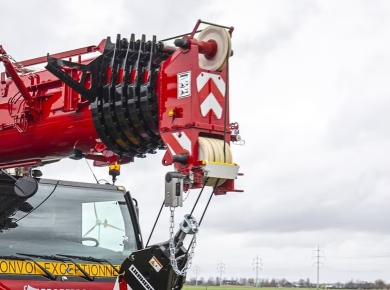It’s often said that a moment of safety can prevent a lifetime of regret, and nowhere is this truer than on construction sites. As someone who has spent years navigating the complexities of health and safety in this high-stakes environment, I’ve seen firsthand how effective communication can make a world of difference. One of the most impactful tools at our disposal is the humble 5-minute safety talk. These quick huddles, often overlooked or rushed through, can serve as powerful reminders of our commitment to safety and well-being. But how do we ensure these brief conversations resonate with our teams and stick in their minds long after the meeting ends?
Understanding the Importance of Engagement
Engagement is the cornerstone of any successful safety talk. When workers feel involved, they’re more likely to absorb the information being presented. This isn’t just about delivering a message; it’s about creating an environment where everyone feels comfortable contributing. I’ve found that starting with an open question can set the tone. For example, asking, “What safety issues have you noticed this week?” invites participation and encourages a culture of safety awareness.
Creating a Safe Space for Discussion
Encouraging open dialogue isn’t always easy, particularly in high-pressure environments. Workers may hesitate to speak up for fear of sounding uninformed or, worse, drawing attention to their own mistakes. To combat this, I recommend establishing ground rules at the outset of each meeting. Reinforce that every question is valid and that sharing experiences—both good and bad—enhances collective safety. This approach not only empowers individuals but can also lead to valuable insights that might not have surfaced otherwise.
Crafting Relevant and Timely Topics
When it comes to content, relevance is key. A safety talk centered around a recent incident on-site, or addressing specific risks tied to an ongoing project, can significantly improve retention. For instance, if there’s been a near-miss involving a particular piece of equipment, addressing it directly can help reinforce the importance of vigilance.
Using Real-Life Examples
Incorporating real-life examples can drive home the point. During one of our safety talks, I shared a story about a colleague who sustained an injury due to a lapse in following lockout/tagout procedures. The discussion that followed was eye-opening; it prompted team members to share their own experiences and thoughts on how we could improve our practices. This exchange not only highlighted the importance of adherence to safety protocols but also fostered a sense of camaraderie in our shared mission to keep each other safe.
Incorporating Visual Aids and Demonstrations
Visual aids can further enhance the effectiveness of a safety talk. Whether it’s a simple PowerPoint presentation, a safety video, or physical demonstrations of equipment, visuals can help clarify complex concepts and keep team members engaged. I’ve used demonstrations to show the proper use of personal protective equipment (PPE), allowing workers to see the correct way to wear gear, which led to immediate improvements in compliance on-site.
Utilizing Technology for Enhanced Learning
In today’s digital age, leveraging technology can add another layer of engagement. Apps that allow workers to report safety concerns or provide feedback on safety talks can be instrumental in keeping the conversation going beyond the scheduled meetings. We’ve implemented a simple feedback form on our project management platform, enabling workers to share their thoughts anonymously. This has not only improved participation but has also helped identify areas for improvement in our safety protocols.
Follow-Up and Accountability
A safety talk without follow-up is like a ship without a sail—it may float, but it won’t go anywhere meaningful. Establishing accountability is crucial. After a safety talk, I recommend assigning specific action items to team members. This could range from conducting a site inspection to reviewing safety protocols. For example, if we discuss the importance of proper ladder usage, I might ask a supervisor to conduct a quick audit of all ladders on-site to ensure they meet safety standards.
Creating a Culture of Continuous Improvement
Encouraging a culture of continuous improvement means that safety is not a one-off discussion but an ongoing conversation. Regularly revisiting previous topics and checking in on action items not only demonstrates commitment but also reinforces the idea that safety is a priority. Creating a safety calendar that outlines when specific topics will be revisited can help keep everyone focused and accountable.
Celebrating Successes and Learning from Failures
Finally, recognizing and celebrating safety achievements can motivate and inspire your team. Whether it’s reaching a milestone in injury-free days or successfully implementing a new safety procedure, acknowledging these successes fosters a positive attitude toward safety. During our weekly meetings, we take a moment to highlight individual contributions and team successes. This not only boosts morale but also reinforces the idea that everyone plays a role in maintaining a safe workplace.
Learning from Mistakes
Conversely, when incidents do occur, it’s essential to approach them as learning opportunities rather than assigning blame. By analyzing what went wrong and discussing it openly, we can work together to develop strategies to prevent future occurrences. This practice builds trust and encourages a proactive approach to safety.
In conclusion, effective safety talks are not just about ticking a box; they’re about fostering a culture of safety that permeates every level of an organization. By prioritizing engagement, relevance, and follow-up, we can transform these brief meetings into powerful tools that resonate long after the conversations end. Let’s commit to making these moments count, ensuring that every team member feels empowered and informed to contribute to a safer workplace. The stakes are high, but together, we can create an environment where safety is not just a priority—it’s a shared value.


